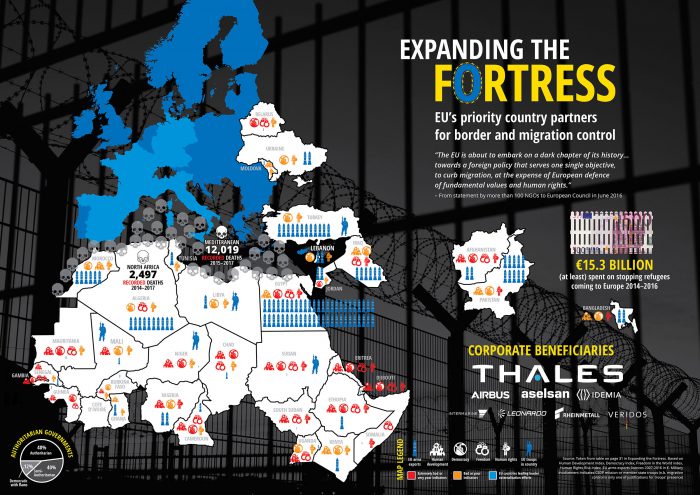tni | 11.05.2018
The policies, the profiteers and the people shaped by EU’s border externalisation programme
The EU has made migration control a central goal of its foreign relations, rapidly expanding border externalisation measures that require neighbouring countries to act as Europe’s border guards. This report examines 35 countries, prioritised by the EU, and finds authoritarian regimes emboldened to repress civil society, vulnerable refugees forced to turn to more dangerous and deadly routes, and European arms and security firms booming off the surge in funding for border security systems and technologies.
Executive Summary
The plight of the world’s 66 million forcibly displaced persons seems to only trouble the European Union’s conscience when the media spotlight turns on a tragedy at Europe’s borders. Only one European nation – Germany – is even in the top ten countries worldwide that receive refugees leaving the vast majority of forcibly displaced persons hosted by some of the world’s poorest nations. The invisibility therefore is only broken when border communities such as Calais, Lampedusa, Lesvos become featured in the news as desperate people fleeing violence end up dead, detained or trapped.
These tragedies aren’t just unfortunate results of war or conflict elsewhere, they are also the direct result of Europe’s policies on migration since the Schengen agreement in 1985. This approach has focused on fortifying borders, developing ever more sophisticated surveillance and tracking of people, and increasing deportations while providing ever fewer legal options for residency despite ever greater need. This has led many forcibly displaced persons unable to enter Europe legally and forced into ever more dangerous routes to escape violence and conflict. Weiterlesen »

